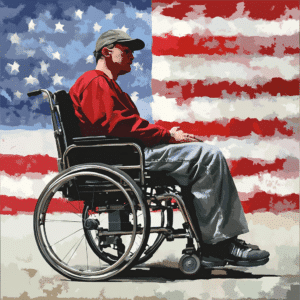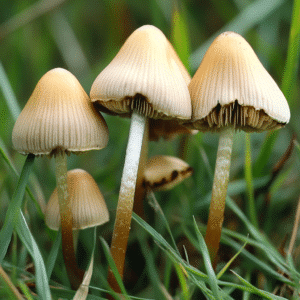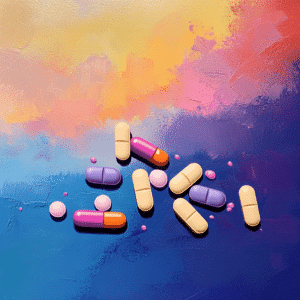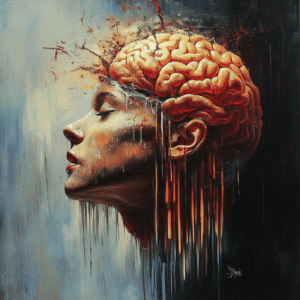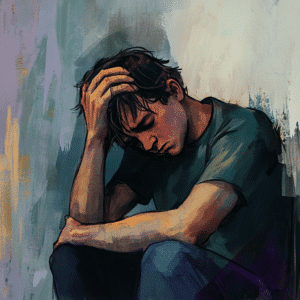In a world where traditional substance addictions often grab the spotlight, behavioral addiction remains an insidious, yet vastly overlooked menace. Behavioral addiction, much unlike substance-related dependencies, revolves around compulsive engagement in rewarding non-substance activities. Whether it’s the allure of winning a bet, the thrill of a “Fortnite” victory, or the rush from another click on a shopping cart, these activities can hijack the brain’s reward system, resulting in devastating consequences on individuals’ lives, mental health, and relationships.
The Nature of Behavioral Addiction
Behavioral addiction forms a sneaky web, trapping individuals in cycles of compulsive behaviors. Unlike the immediate physical impact of drugs or alcohol, behavioral addiction subtly entices with activities that seem harmless at first glance. These behaviors, often seen as recreational or stress-relieving, range from gambling and shopping to excessive internet use and gaming. Despite lacking physical substances, these activities activate the brain’s reward paths, delivering hits of blissful dopamine that feed the addiction.
Comparing Behavioral Addiction to Substance Addiction
Similarities in Reward Pathways
Both behavioral and substance addictions manipulate the brain’s reward system, primarily involving the neurotransmitter dopamine. This similarity explains why a teenager’s euphoria from hitting high scores in “Fortnite” can parallel the rush experienced by someone using opioids. The brain cannot distinguish well between a physical substance and an engaging behavior when releasing dopamine, leading to similar patterns of dependency.
Distinctive Withdrawal Symptoms
Withdrawal from behavioral addiction can be just as harrowing as from substances, though the symptoms differ. With substance addiction, individuals might wrestle with physical reactions like trembling or vomiting. Behavioral addicts, however, face intense psychological withdrawal—marked by anxiety, irritability, and depression. Imagine a teenager cut off from their internet connection: the ensuing distress mirrors the emotional chaos someone withdrawing from nicotine might endure, highlighting the severe impact of behavioral dependency.
| Aspect | Description |
| Definition | Behavioral addictions involve compulsive engagement in non-substance-related behaviors that produce rewarding sensations. |
| Common Types | Gambling, overeating, television compulsion, internet addiction |
| Similarity to Substance Addiction | Like drug or alcohol addiction, individuals are addicted to the behavior and the feelings it produces, rather than a substance. |
| Characteristics | Compulsive engagement despite negative/harmful consequences |
| Consequences |
|
| Causes | Euphoric feelings from engaging in the behavior; potential for the behavior to become habitual due to the pleasure experienced. |
| Examples of Harm |
|
| Treatment Approaches |
|
Common Forms of Behavioral Addiction
Gambling Addiction
Often romanticized in films, gambling addiction devastates lives with relentless betting despite harmful outcomes. The case of Sam Williams, the son of actress Judi Dench, underscores the personal and familial toll of such addiction. Persistent gambling not only drains finances but also fractures relationships, showcasing the critical need for awareness and support in combating this addiction.
Internet and Gaming Addiction
The digital landscape ensnares countless individuals, from social media’s instant gratification to the immersive worlds of MMORPGs like “World of Warcraft.” On average, gamers can spend around 8 hours a week playing, with some showing clear signs of dependency. When limited, these individuals often exhibit symptoms akin to withdrawal, underscoring the depth of their attachment.
Shopping Addiction
Exacerbated by e-commerce giants like Amazon, shopping addiction sees individuals drowning in debt due to compulsive spending. Celebrity Lindsay Lohan’s public struggle with this compulsion sheds light on its impact. For these addicts, purchasing becomes an escape from emotional pain, spiraling into financial trouble and exacerbating underlying issues.
The Psychological Impact of Behavioral Addiction
Mental Health Consequences
Behavioral addiction frequently coexists with mental health disorders such as depression and anxiety. People often turn to their addictive behaviors as coping mechanisms, further entrenching their issues. Compulsive gamers, for example, might seek virtual triumphs to offset real-world failures, only to find themselves more alienated and dejected, trapped in a vicious cycle of dependence.
Relationship and Social Repercussions
Addictive behaviors wreak havoc on relationships. A spouse engulfed in online gambling can erode trust and financial stability, causing deep-seated conflicts and potential divorce. Similarly, children submerged in gaming might disconnect from familial bonds, breeding distress and communication breakdowns within the household.
Approaches to Treatment and Recovery
Cognitive Behavioral Therapy (CBT)
Cognitive Behavioral Therapy (CBT) stands as a keystone in treating behavioral addiction. This method aids patients in identifying and reshaping the destructive thought patterns fueling their addiction. Celebrities like Demi Lovato have acknowledged CBT’s role in overcoming self-destructive behaviors, highlighting its effectiveness in fostering recovery.
Support Groups and Community Resources
Engaging in support networks, such as Gamblers Anonymous or the Internet Overuse Helpline, offers a sense of community and shared experience that’s crucial for recovery. These groups empower individuals by providing mutual support and practical strategies, facilitating the journey away from addiction.
Emerging Treatments and Technologies
Advancements in treatment, like virtual reality (VR) therapy, showcase promising new avenues. VR facilitates exposure therapy by simulating real-world scenarios where individuals can safely confront and manage their triggers. Research from Stanford University indicates that VR therapy can significantly diminish cravings and bolster coping skills, making it a burgeoning tool in addiction treatment.
Finding Balance: Moving Beyond Addiction
Grasping the complexity of behavioral addiction is instrumental in crafting compassionate and effective interventions. Empowering those afflicted relies on a melange of awareness, support, and innovative treatments. As society delves deeper into understanding behavioral compulsions, it’s vital to foster environments where individuals can reclaim control and rediscover their potential, free from addiction’s chains. This endeavor demands empathy, perseverance, and an unwavering commitment to mental well-being.
For more information and support, visit Mothers Against Addiction—we’re here to help parents and families navigate these challenging times with understanding, resources, and unwavering support.
Bought Vs Broughtnew orleans strip ClubsR2 D2 actorberserk griffithMarijuana addictionNicotine addictionFentanyl addiction
Behavioral Addiction: The Hidden Compulsion
Discovering the nuances of behavioral addiction can feel like an eye-opener. Many aren’t aware that activities as mundane as watching TV or shopping can morph into addictive behaviors. For instance, you might be surprised to learn that internet addiction is recognized as a growing concern. Cutting-edge research shows that behavioral addictions share similar pathways in the brain as substance addictions. So, just like substances can hijack one’s neurochemistry, so can excessive behaviors.
Fascinating Insights into Behavioral Addiction
Did you know that the brain’s reward system is at the core of how behavioral addiction manifests? Triggered by dopamine release during a rewarding activity, this can create a feedback loop craving more engagement. Oh, and speaking of dopamine, activities like gambling or even compulsive smartphone use can light up brain regions in similar ways to drugs. Just imagine, that buzz one gets from winning a bet or hitting “like” on a social media post.
Trivia that Intrigues
Here’s a fun bit: individuals with behavioral addictions often experience emotional highs and lows comparable to those of chemical addictions. For example, someone with a gaming addiction might feel an intense euphoria after achieving a new high score, followed by a crashing low when they can’t play. Another tidbit? Some scientists argue that compulsive behaviors may have an evolutionary basis, as they can be linked to reward-seeking activities necessary for survival in ancient times.
Surprising Connections
Transitioning from brain chemistry—a major factor that many don’t realize—is that behavioral addictions can occur without any external substances. This means the addiction is driven purely by the behavior itself. So, a person might never touch alcohol or drugs yet face crippling dependence on shopping or exercise. Such insights help in understanding how addictive behaviors can be just as debilitating as substance addictions.
Understanding these quirks and nuances helps shine a light on the often-overlooked world of behavioral addiction. Knowledge, after all, is power.
What is a behavioral addiction?
Behavioral addiction involves getting hooked on a specific behavior or activity, like gambling or overeating, rather than a substance. The person is driven to repeatedly engage in the activity despite facing negative consequences.
Which of the following is an example of a behavioral addiction?
Examples of behavioral addiction include gambling, overeating, being obsessed with watching TV, and using the internet excessively. These behaviors can become compulsive and interfere with daily life.
What is addicted behavior?
Addicted behavior is when a person can’t stop doing something, even though it’s causing harm to their physical health, relationships, or finances. They keep repeating the behavior because it gives them a sense of pleasure or relief.
What causes behavior addiction?
Behavioral addiction is often caused by the rush or euphoria someone feels when they engage in the addictive behavior. This good feeling can become a habit, making the person seek it out repeatedly.
How to fight behavioural addiction?
Fighting behavioral addiction usually starts with recognizing the problem. Seeking help from a therapist or support group, setting goals, and finding healthier activities to replace the addictive behavior can make a big difference.
What is withdrawal from behavioral addiction?
Withdrawal from behavioral addiction can involve feelings of anxiety, irritability, and strong cravings to engage in the behavior again. It can be tough, but support from professionals and loved ones can help manage these symptoms.
What is the difference between a habit and a behavioral addiction?
A habit is something you do regularly, often without thinking, but it doesn’t usually cause harm. In contrast, a behavioral addiction is compulsive and continues even when it leads to negative consequences.
Can behavioral addiction be cured?
Behavioral addiction can’t necessarily be “cured,” but it can be managed effectively. With the right treatment and support, many people learn how to control their addictive behaviors and lead fulfilling lives.
What are the core components of behavioral addiction?
Core components of behavioral addiction include preoccupation with the behavior, inability to stop despite harm, using the behavior to cope with emotions, and needing more of the behavior to get the same effect.
What does a porn addiction look like?
Porn addiction looks like someone spending excessive amounts of time viewing pornography, often at the expense of their personal relationships, job, or health. They might find it hard to stop even when they want to.
What is a psychological addiction?
Psychological addiction refers to the mental and emotional aspects of addiction, where a person feels compelled to engage in a behavior to relieve stress or feel pleasure, even without physical dependence.
What is compulsive behavior in addiction?
Compulsive behavior in addiction means repetitively engaging in an activity or taking a substance, even when it’s destructive. It’s driven by an overwhelming urge that becomes hard to control.
What is an example of a behavior addiction?
An example of behavioral addiction is someone who compulsively gambles, continuing to bet money despite losing large amounts, creating financial problems, and straining their relationships.
What are the three types of addicts?
Three types of addicts include those addicted to substances like drugs or alcohol, those with behavioral addictions like gambling or internet use, and those with both types of addiction, known as dual-diagnosis.
What is a behavioral addiction in the brain?
Behavioral addiction affects the brain by hijacking its reward system. Engaging in the addictive behavior releases dopamine, making you feel good and reinforcing the behavior, which makes you want to do it again.
What is the difference between a habit and a behavioral addiction?
A habit is a repeated action done usually without thinking, and it doesn’t necessarily cause harm. A behavioral addiction, however, involves compulsive engagement in an activity despite negative consequences.
What is the DSM-5 definition of behavioral addiction?
The DSM-5 defines behavioral addiction primarily with examples like gambling disorder, where the individual is focused on the behavior at the expense of other life activities and continues even when it’s causing harm.
What are the three types of addicts?
The five characteristics of addictive behavior include compulsive use, loss of control, continued use despite negative consequences, neglecting other activities, and distress or impairment in daily functioning.






